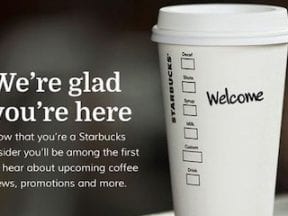Retaining ecommerce customers lowers costs and boosts profits. In 2021, customer retention could be critical.
“At the onset of the pandemic, overall retail sales were down. But then a major shift occurred, and it was by far the largest move toward ecommerce that we have ever seen,” said Joe McCarthy, director of performance marketing for Klaviyo, an email and SMS marketing platform.
“In 2020 we saw multiple years of ecommerce growth….And when we look at [2021], the big question is, ‘Will this shift to ecommerce last?’ From our perspective, we definitely think it will….for smaller brands [the growth in ecommerce] is a major opportunity.”
Seizing that opportunity will be a matter of enticing first-time customers to return for more purchases.
1. Use the RFM Model
The recency, frequency, and monetary value (RFM) model makes it possible to identify and market to consumer segments based on their transactional behavior. The model is among the most potent ways to drive marketing automation, which, in turn, can play an important role in customer retention.
Using a scale of either 1 to 5 or 1 to 10, assign every customer a score for how recently she has purchased, how often, and the monetary value of her orders. For monetary value, you could use the average order amount or lifetime customer value, whichever makes more sense for your business.

A recency scale within the RFM model tracks when a customer last consummated a purchase. This example applies a score of 5 to 1, depending on the purchase date. A similar approach could be used for frequency and monetary value.
Each customer should have an RFM score. On a five-point scale, a 555 score would represent one of your best customers. Perhaps this 555 customer deserves a handwritten note from your CEO.
A customer with a 355 score could warrant an automated email or SMS campaign to reengage. Thus, the RFM model could become a trigger for several automated campaigns to entice customers to purchase again.
2. Customer Onboarding
A customer onboarding program can begin the process of building a relationship. This onboarding program should encourage new customers to:
- Create an account on your ecommerce site,
- Subscribe to your store’s content and promotional emails or texts,
- Become members in a store community,
- Contact your customer service team as needed,
- Connect with your store on social media,
- Download your ecommerce app, if applicable.
The onboarding process should be automated and include a few triggers where your customer service team members take action.
For example, when a customer orders the second time, consider sending a private message.
Starting this onboarding process late makes sense in 2021. If a customer initially bought in June 2020 but has not returned, consider sending a special Covid-related message, thanking him for the order, thus starting the onboarding process.
3. Build Communities
Building communities around a business or a lifestyle is a trend for ecommerce companies. The idea is to create a Facebook group or, perhaps, a Mighty Networks community where customers can interact with your business and with each other.
Invite all of your shoppers to join the community and treat it like social media marketing, content marketing, and customer service.
4. Offer Subscriptions
The ecommerce subscription model has many benefits, such as significantly improving customer retention rates. Combine elevated retention with improved margins, easy inventory management, and less expensive shipping, and you might ask why you didn’t consider subscriptions before.
In 2021, focus initially on adding subscription offerings for all of your consumable products. If you sell dog treats, make it possible for pet owners to schedule regular deliveries. If you sell cordless grinders, offer an abrasives subscription plan.
Once you have subscriptions in place for consumables, consider curated boxes.
5. Segment and Personalize
The RFM model is a form of customer segmentation. It’s number one on this list of retention ideas for good reason. But RFM models should not be your company’s only method of segmentation.
Developing personalized or segmented campaigns is an important part of customer retention marketing.
“A relationship is made by continually building on the small insights that you gather from a customer each time that you interact with them. So what did they purchase? What preferences did they display in their behavior — purchasing and browsing?” said Klaviyo’s McCarthy, making the point that customer retention should be data-driven.
The key for segmentation and personalization, then, is leveraging what your company knows about a customer to understand that person better and ultimately deliver the most relevant messages.
6. Double Down on Content
“Content marketing plays a huge role [in customer retention],” said McCarthy. “When you think about the emails you receive from any brand, it is one thing to receive a note on a particular product, but you can only send a consumer a product email so many times. They really want to see other things that are going on with your brand.”
Nuun Hydration, which sells hydration tablets for athletes, for example, has reported that their best performing email messages or not product emails, according to McCarthy, but rather content emails.
Remember, content marketing is the act of creating, publishing, and promoting articles, videos, and podcasts to attract, engage, and retain customers.
In 2021, content marketing can also help retain customers.
7. Focus on Service
Customer service is a marketing function for some ecommerce companies. That’s right, the customer service representatives answering Facebook messages, chats, texts, and phone calls work for the marketing department, not operations.
The rationale is that customer service is vital to retention. So in 2021, put customer-service key performance indicators high on your company’s scorecard.





